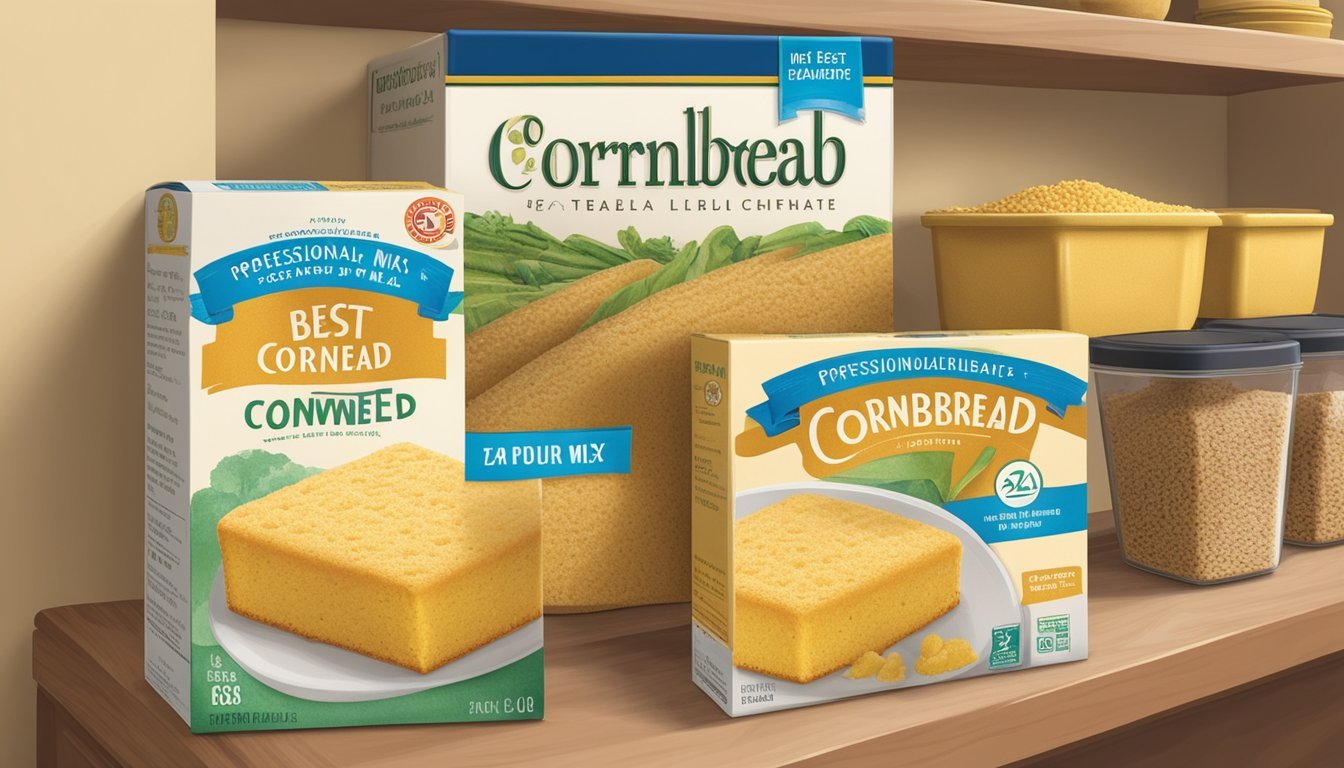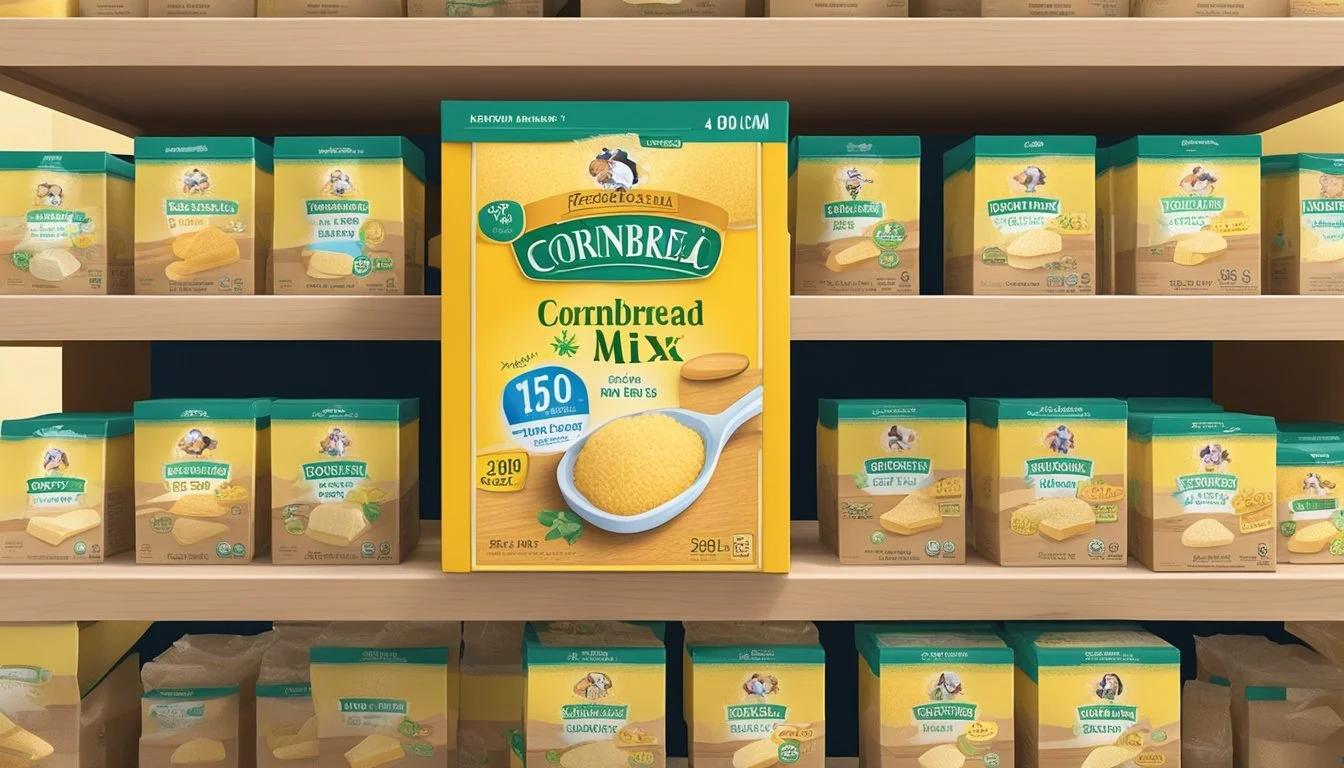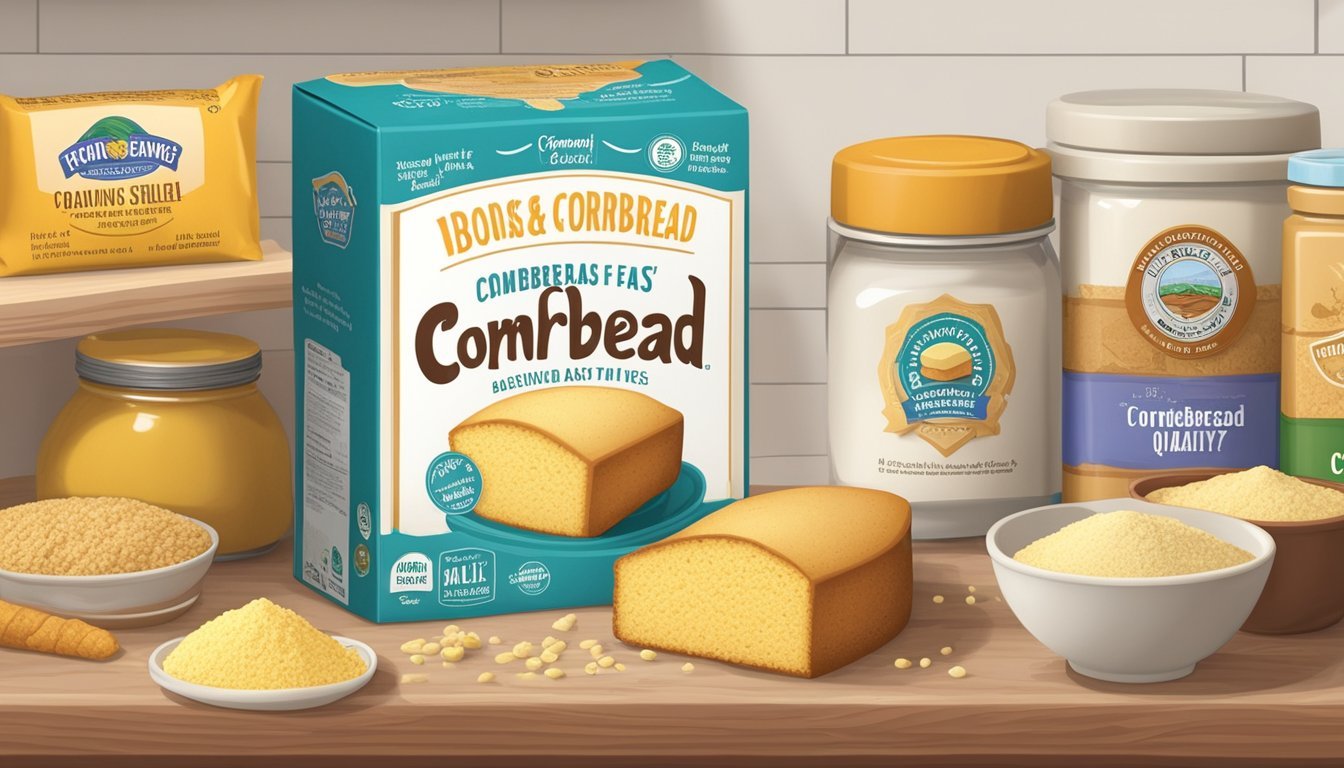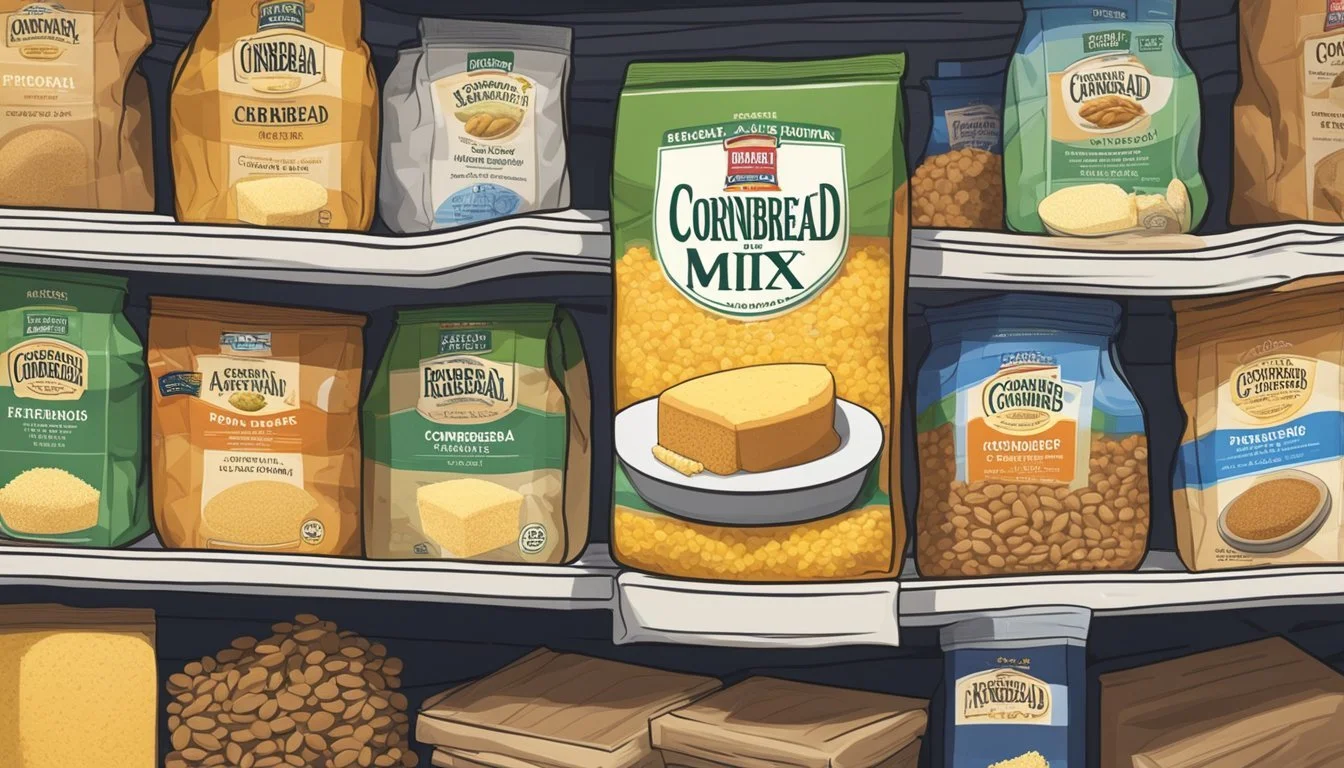How Long Does Cornbread Mix Last?
Shelf Life and Storage Tips
Cornbread mix (how long does cornbread mix last?) is a pantry staple for many, offering a quick and convenient way to bake this traditional southern delicacy. The longevity of cornbread mix depends largely on its storage conditions. When kept in a cool, dry area, an unopened package of cornbread mix can typically maintain its best quality for about 12 to 18 months. The "best by" date is not an expiration date but rather the manufacturer's estimate for when the product will be at peak quality.
Once opened, the mix's shelf life may decrease, making proper storage even more crucial to maintaining its quality. It's advisable to transfer the mix to an airtight container if it's not used entirely in one baking session. This helps to prevent moisture and other contaminants from affecting the mix. Consumers must be aware that the sensory qualities of the mix—taste, aroma, and texture—might decline before safety becomes an issue, so using the mix within a reasonable time frame is recommended to enjoy the best results.
Understanding Cornbread Mix
Cornbread mix typically offers a convenient shortcut to homemade bread by combining most of the essential dry ingredients. It is important for consumers to comprehend what constitutes the mix, the relevance of expiration dates, and how to detect spoilage through visual and sensory indicators.
Composition of Cornbread Mix
Cornbread mix contains a blend of wheat flour, a leavening agent such as baking powder, sugar, and salt. These ingredients are mixed in precise proportions to ensure that the cornbread has the correct texture, flavor, and color. The just-add-water mixes may also include dehydrated milk products to facilitate the baking process.
Ingredients: Wheat flour, Sugar, Salt, Baking powder
Leavening Agent: Baking powder is crucial for the mix to rise
Texture & Color: Typically results in a soft, golden bread
The Importance of Expiration Dates
Expiration dates on cornbread mix packages serve as a guideline for consumers to know until when the mix is expected to maintain its best quality. While these mixes can sometimes remain usable beyond this date, the potency of the leavening agent may diminish over time, affecting the cornbread's ability to rise and potentially its taste.
Best Before Date: Suggestive of quality maintenance
Leavening Potency: Critical for proper rise and texture
Visual and Sensory Indicators
To ensure the freshness of the cornbread mix, one should examine the mix for changes in color or signs of mold. A spoilt mix might also have an off smell or odor. These factors are fundamental indicators of the mix's integrity and whether it is advisable to use it for baking.
Color: Should be consistent with no discoloration
Smell: Should not have an unpleasant odor
Mold: Presence indicates spoilage
Proper Storage Techniques
Ensuring the longevity of cornbread mix involves maintaining optimal storage conditions that protect it from adverse elements like moisture, light, and air. Proper storage techniques can significantly lengthen the shelf life and maintain the quality of the mix.
At Home Storage Solutions
Storing cornbread mix effectively at home requires a cool, dry place such as a pantry or cupboard away from any sources of heat or direct sunlight which can cause degradation. A sealed container is paramount to prevent exposure to air and moisture, which can lead to spoilage. One can use an airtight container made of plastic or glass for this purpose.
Containers and Wrapping:
Plastic containers: Airtight with secure lids
Glass jars: With airtight seals
Plastic wrap: Tightly wrapping the original packaging
Aluminum foil: An additional layer of protection to wrapped items before placing them into containers
Ideal Conditions:
Temperature: Room temperature (below 85°F)
Environment: Low humidity, away from stoves, ovens, and dishwashers
Extending Shelf Life Via Freezing
For long-term preservation, freezing cornbread mix can extend its shelf life well beyond pantry storage. To freeze the mix, one should first place it in a sealed container or a vacuum-sealed bag to safeguard against freezer burn and ice crystal formation. When stored in the freezer, it's crucial to label the container with the date of storage.
Methods:
Airtight containers: Prevents freezer burn and absorbs odors
Vacuum sealing: Reduces air exposure, preserving quality and freshness
Freezer-safe bags: Double-bag to add an extra layer of moisture protection
Considerations:
Freeze in small batches: Easier to thaw and use without refreezing
Defrosting: Allow the mix to thaw in the fridge to avoid moisture accumulation
Shelf Life of Cornbread Mix
The shelf life of cornbread mix can generally range from several months up to 18 months when stored properly, with some variance based on brand and storage conditions.
Factors Affecting Shelf Life
Several key factors influence the shelf life of cornbread mix. Preservatives play a crucial role; store-bought mixes often contain them to extend shelf life. Storage conditions have a significant impact as well. Cornbread mix should be kept in a cool, dry place to prevent exposure to moisture and heat, which can accelerate spoilage. Additionally, the type of packaging affects longevity; an unopened, tightly sealed package will help preserve the mix's quality over time.
Homemade cornbread mix often lacks the preservatives found in commercial products, which can result in a shorter shelf life. Homemade mixes should be used relatively quickly and stored in airtight containers to maintain freshness.
Shelf Life Variations by Brand
Different brands of cornbread mix, such as Jiffy and Krusteaz, will have their shelf life determined by their specific formulations and packaging.
Jiffy Cornbread Mix: Typically remains at peak quality for about 12 to 18 months.
Krusteaz Cornbread Mix: Also lasts for approximately 12 to 18 months under ideal conditions.
It is essential to note that the best by date or use-by date provided on the packaging is a manufacturer's estimate for when the product will remain at its best quality. It is not a safety date. After these dates pass, the quality, particularly texture and flavor, may decline, and leavening agents such as baking powder may become less effective. Therefore, while safe to consume, the finished product might not meet the expected standards.
Signs of Spoilage in Cornbread Mix
When assessing cornbread mix for spoilage, there are clear indicators such as the presence of mold, distinct odor changes, and alterations in texture or color. Recognizing these signs can prevent the consumption of a spoiled product that could lead to food-related illness.
Recognizing Spoiled Cornbread Mix
Spoiled cornbread mix typically presents several warning signs:
Mold: Visible mold growth, which can appear as green or black specks, is a definite sign of spoilage.
Discoloration: Any significant changes in color suggest the product is no longer suitable for use.
Texture: Clumping or hardening indicates moisture has compromised the mix.
Odor: A rancid or off smell is often the result of bacterial growth or the breakdown of fats in the mix.
Health Risks of Consuming Spoiled Product
Using spoiled cornbread mix can lead to health complications:
Food Poisoning: Bacteria present in spoiled mix can cause food poisoning, symptoms of which may include nausea, vomiting, and diarrhea.
Rancidity: Consumption of rancid products can be unpleasant and potentially harmful over time.
Consumers should always check their cornbread mix before use to ensure safety and the best culinary results.
Utilization and Consumption
When it comes to cornbread mix, understanding its shelf life is crucial for both safety and taste. This section provides details on how to use expired cornbread mix, specific preparations and recipes, and serving and consumption tips to ensure a delightful cornbread experience.
Using Expired Cornbread Mix
If a cornbread mix has passed its "best by" date, it can often still be used if it shows no signs of spoilage such as mold, off odors, or an altered appearance. The consumer should inspect the mix thoroughly before use. However, key characteristics like fluffiness and taste may be diminished.
Preparations and Recipes
To prepare cornbread, one typically needs to add liquid ingredients to the dry mix. Common additions include milk, butter, or eggs. For a tangier flavor, buttermilk can replace regular milk. Mix these ingredients until a smooth batter forms before baking to achieve a fluffy consistency. The nutritional content of cornbread can vary depending on the recipe, so adjustments can be made to enhance its healthfulness.
Serving and Consumption Tips
Freshly baked cornbread serves well as a side dish with meals like chili or can be enjoyed on its own. Leftover baked cornbread should be stored properly to maintain its taste and texture. It's important to consume the baked product within a few days to avoid spoilage and ensure maximum freshness.
Additional Tips and Considerations
In maintaining the quality of cornbread mix and determining when it has reached the end of its useful life, both store-management and sensory evaluation play crucial roles.
When to Discard Cornbread Mix
Visual Check: Start by examining the mix. If there is any visible mold or an unusual appearance, it should be discarded promptly.
Smell Test: A rancid or off odor emanating from the mix is a clear indicator that it's time to throw it away.
Taste Test: If the mix passes the visual and smell tests, prepare a small sample and taste it. An off-flavor will suggest that the mix is no longer suitable for consumption.
Baking Powder Testing: For homemade mixes, check if the baking powder is still active by measuring a half teaspoon into a cup of hot water. If it doesn't bubble, it's time to make a new batch.
Purchasing and Repurchasing Best Practices
Check Dates: Always check the 'best by' date when purchasing store-bought cornbread mix—it's a useful guideline, though many mixes last longer when stored correctly.
Proper Storage: To extend the shelf life, store the mix in a cool, dry place and consider vacuum sealing to keep out moisture and air.
Efficient Use: Rotate your stock and use older mixes first to ensure quality and reduce waste.
Monitor Baking Results: Over time, leavening agents in the mix like baking powder may lose efficacy. If your cornbread isn't rising as it should, it might be time for a new mix.
FAQs: Shelf Life and Quality of Cornbread Mix
Understanding the shelf life and quality of cornbread mix is essential for both safety and taste. This section provides insights into storage, freshness, and preparation to help ensure the best baking results.
Common Questions About Storage
Where should dry cornbread mix be stored? Dry cornbread mix should be kept in a cool, dry place. Proper storage ensures the mix maintains quality over time.
Does packaging affect shelf life? Yes, packaging plays a critical role. Cornbread mix should remain in its original packaging or be transferred to an airtight container to minimize exposure to air and moisture, which can shorten its shelf life.
Quality and Freshness Concerns
How can one tell if cornbread mix has spoiled? Signs of spoiling include a visible change in appearance, the presence of mold, or an off odor. Spoilage indicates that the cornbread mix is no longer safe to use.
What is the effect of the 'best by' date on quality? The 'best by' date indicates peak quality. Dry cornbread mix may retain quality beyond this date if stored properly, but its effectiveness, especially the leavening agents, may decline over time.
Inquiries on Preparing and Baking
How does time affect cornbread mix once prepared? After mixing, cornbread batter should be baked promptly as letting it sit can cause a decrease in the rise due to the reaction of leavening agents.
Can cornbread mix be used after the use-by date? It might be safe to use beyond the use-by date if there are no spoilage signs; however, its effectiveness, particularly for rise and flavor, may be reduced, yielding a less desirable muffin or bread.
Conclusion: Maximizing Cornbread Mix Lifespan
To ensure the longevity of cornbread mix, one should prioritize its storage environment. The shelf life of an unopened cornbread mix typically extends between 12 to 18 months when kept at room temperature in a dry and cool place. Once the seal is broken, quality preservation becomes more crucial to prevent spoilage.
Tips for Storage:
Seal Tightly: After opening, transfer the mix to an airtight container to prevent moisture ingress, which can compromise quality and increase the risk of mold.
Avoid Heat and Light: Store the mix away from sunlight and sources of heat, as these can degrade ingredients and reduce its shelf life.
Pest Control: Ensure the storage area is free from pests that could contaminate the mix.
Freezing for Extended Shelf Life:
Although not necessary, one may freeze the mix to extend its freshness. In a freezer, the mix can maintain its quality for beyond its typical pantry shelf life.
To freeze, one should seal the mix in a freezer-safe bag or container, labeling it with the current date for future reference.
Assessing Quality:
Regular checks for signs of spoilage, such as an off smell, mold, or a change in texture, are vital. These indicate that the mix is no longer suitable for consumption, regardless of the storage method used.
By adhering to these guidelines, individuals maximize the shelf life of their cornbread mix, ensuring it remains fresh and retains its intended quality for as long as possible.










